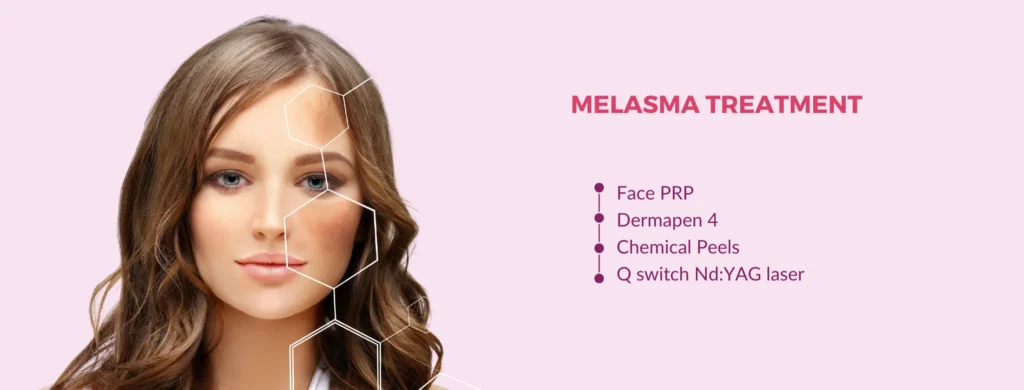Treating melasma often involves a combination of topical medications, chemical peels, microneedling, and laser procedures. While these therapies can significantly improve pigmentation, they can also come with side effects—especially if not monitored carefully. For optimal patient care in melasma, it’s important to understand what to expect, how to manage side effects, and when to seek help.
This guide outlines common melasma treatment side effects, signs of adverse reactions, and practical tips for managing discomfort while protecting your skin.
Common Side Effects by Treatment Type
Melasma treatments vary in strength and depth, and each category of treatment carries its own potential for side effects.
1. Topical Medications
Includes hydroquinone, tretinoin, azelaic acid, kojic acid, and corticosteroids.
Common Side Effects:
- Redness and irritation
- Dryness or peeling
- Burning or stinging
- Skin thinning (with prolonged corticosteroid use)
Tips to Manage:
- Start with alternate-day application and gradually increase frequency
- Use a fragrance-free, hydrating moisturizer
- Apply a mineral sunscreen to reduce UV sensitivity
2. Chemical Peels
Includes glycolic acid, salicylic acid, trichloroacetic acid (TCA), and lactic acid.
Common Side Effects:
- Temporary redness and flaking
- Mild stinging or burning
- Post-inflammatory hyperpigmentation (PIH), especially in darker skin
Tips to Manage:
- Avoid exfoliants and active skincare products before and after peels
- Do not pick or peel flaking skin—let it shed naturally
- Use a gentle cleanser and moisturize frequently
3. Laser Treatments
Includes Q-switched Nd:YAG, fractional lasers, and PicoSure.
Common Side Effects:
- Swelling and redness
- Temporary darkening of melasma patches
- Risk of PIH or burns if incorrect settings are used
- Skin sensitivity for several days
Tips to Manage:
- Apply cold compresses immediately after treatment
- Avoid sun exposure completely for several days
- Use a physical (mineral) sunscreen with zinc oxide or titanium dioxide
4. Microneedling
Often combined with topical serums like tranexamic acid or vitamin C.
Common Side Effects:
- Redness and pinpoint bleeding
- Mild swelling
- Flaking or dryness during healing
Tips to Manage:
- Avoid makeup for 24–48 hours
- Use gentle moisturizers and sunscreen
- Keep skin hydrated and avoid active ingredients until healed
Signs of Adverse Reactions
While mild irritation is expected, certain symptoms indicate an adverse reaction that may require medical attention.
🚩 Warning Signs:
- Severe burning or blistering
- Skin infection (pus, warmth, or spreading redness)
- Persistent darkening of pigmentation
- Prolonged swelling, scabbing, or crusting
- Allergic reactions (rash, hives, or difficulty breathing)
If any of these symptoms appear, contact your dermatologist promptly.
When to Seek Medical Advice
Not all side effects are cause for alarm, but timing and severity matter. Here’s when to reach out to your provider:
- Symptoms last more than 5–7 days without improvement
- Worsening pigmentation after a treatment session
- Signs of hypopigmentation or permanent discoloration
- Skin barrier feels compromised (tight, burning, cracked)
Your provider may adjust your treatment plan, recommend barrier-repair products, or prescribe medications to calm inflammation.
Tips for Minimizing Discomfort and Risks
With proper care, most side effects of melasma treatment can be minimized. Follow these steps for safer, more comfortable treatment outcomes:
✅ Pre-Treatment:
- Follow all skincare prep instructions from your provider
- Avoid sun exposure for at least 1–2 weeks before procedures
- Disclose all medications and skincare products during your consultation
✅ Post-Treatment:
- Use sunscreen religiously—reapply every 2 hours if outdoors
- Moisturize frequently to support the skin barrier
- Avoid direct sun, sweating, and heat (hot showers, saunas) for 48 hours
- Do not exfoliate or use retinoids until cleared by your dermatologist
✅ Long-Term:
- Stick to maintenance treatments as prescribed
- Schedule regular check-ins with your provider to monitor progress
- Address any skin changes early before they worsen
Final Thoughts
While melasma treatment side effects are common, they’re often manageable with the right skincare habits and professional guidance. By following a structured patient care melasma plan and maintaining open communication with your provider, you can safely navigate your treatment journey and achieve long-lasting results.




